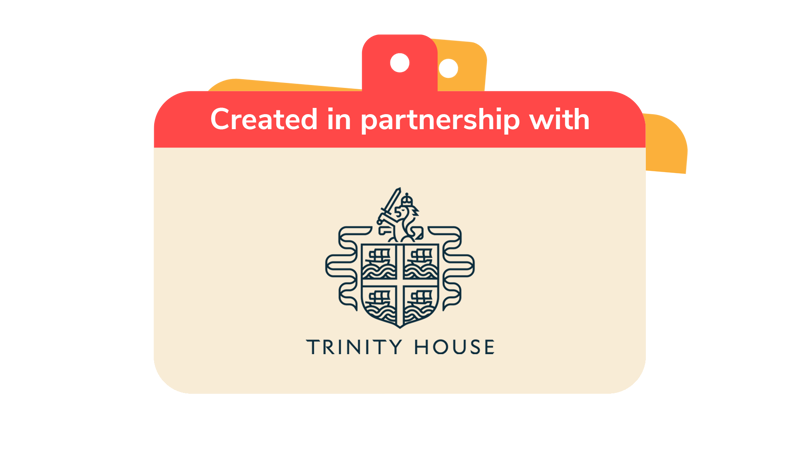
Pin the propeller on the powerboat
You’ll need
- Big pieces of paper
- Scrap paper
- Pens or pencils
- Scissors
- Sticky tack
- Blindfold
- Access to internet OR books showing parts of a watercraft
Before you begin
- This activity requires an unlabelled picture of a watercraft that the group can stick various components onto to show where they go. In these instructions, we’ve used a powerboat as an example. You could blow this up and print it, or produce a simple drawing yourself. It doesn’t need to win the Turner Prize, it just has to look like a boat!
- If you have access to a watercraft on land, with various components detached, you could run this activity on an actual vessel. This allows everyone to assess the touch and weight of each component before placing it where they think it goes.
- Write down the parts of the watercraft that you’d like the group to label. Cut these out and put a blob of sticky tack on the back of each one. Then, use sticky tack to stick the picture of the watercraft (if you’re using one) up on a wall in the meeting place, at a height everyone can reach.
Run the activity
- Have everyone gather around the picture of the boat. Give out the slips of paper with the parts of the boat written on them.
- Everyone should think about and discuss what each part might be, what it might do and where it might fit onto the drawing of the boat. When everyone is agreed on what goes where, they may stick up each part on the spot they think it belongs.
- Check to see how accurate the group was with their components. This may require a picture from the internet or in a book for guidance. If any parts have been incorrectly placed, move them to their correct position. If anyone is confused as to what any of the components do, use the internet or the book to give a simple explanation.
Here’s a diagram to use as a guide, or to be blown up for use in your game:

- Remove all of the slips of paper from the picture of the watercraft. Explain that the group will now be playing a nautical version of ‘Pin the tail on the donkey’, where individuals must pin the component onto the correct part of the boat. Someone should be nominated to go first.
- Blindfold the person going first and give them a slip of paper. Tell the blindfolded person the name of the component they’ve been given. With care, they should approach the watercraft picture and stick it up on the image where they think it goes.
- Remove the blindfold and give it to the next person to go. Give this person a different component and tell them what it is. Continue in this way until all of the components have been stuck on the picture.
- When everyone’s taken their turn, have a look at the picture. See how close the group came to correctly placing the components. Ask the group whether they think the boat would still work as it should with the components where they are.
Reflection
People have been taking to the water in craft of all shapes and sizes for thousands of years. The designs and shapes change based on a number of factors, like where the craft’s used, who uses it and what items it might need to carry. What are the most unique things a particular watercraft might have, that set it apart from the rest? What about the most common things? All watercraft need some sort of hull to keep them afloat, for example, from the ferry to the jet ski.
What might happen to these vessels if parts were added or removed, or put in a different place entirely? Features like lights are regularly positioned on ships in the same places to help other craft identify them. Displaying lights in the wrong place could put people in danger.
Safety
All activities must be safely managed. You must complete a thorough risk assessment and take appropriate steps to reduce risk. Use the safety checklist to help you plan and risk assess your activity. Always get approval for the activity, and have suitable supervision and an InTouch process.
- Dark
Provide some light, so the environment isn’t completely dark. Everyone must be able to see others and move around the area safely.
Add or remove more complex or general parts of the boat to change the challenge.
Anyone who’s uncomfortable wearing a blindfold could cover their face with a hand or shut their eyes instead.
All Scout activities should be inclusive and accessible.
Why not try this game again with another vessel? Or better yet, find a real boat on land and identify each part as you explore it.
Allow anyone with boating expertise to help explain what various components are and where they might be found on a vessel.
